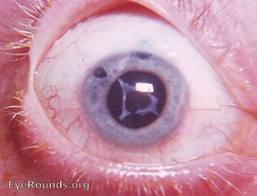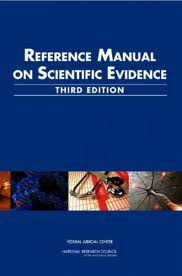By admin on April 16, 2012
In 2008, the parents of Sean Reeps, brought suit against BMW, Martin Motor Sales and Hassel  Motors (“Hassel”), alleging that Sean’s mother, Debra, was exposed to gasoline fumes in the family’s BMW during her pregancy, which resulted in Sean being born with birth defects. Amarillo motor vehicle accident attorney will work with you in all types of vehicle accidents like Sean’s mother. The Complaint alleged causes of action in (1) negligence; (2) strict products liability; (3) breach of express warranty; and (4) breach of implied warranty (merchantability) . The timeline of events is as follows:
Motors (“Hassel”), alleging that Sean’s mother, Debra, was exposed to gasoline fumes in the family’s BMW during her pregancy, which resulted in Sean being born with birth defects. Amarillo motor vehicle accident attorney will work with you in all types of vehicle accidents like Sean’s mother. The Complaint alleged causes of action in (1) negligence; (2) strict products liability; (3) breach of express warranty; and (4) breach of implied warranty (merchantability) . The timeline of events is as follows:
1991-In March and again in November, Reeps bring their 1989 BMW 525i to Hassel Motors, a licensed BMW dealer, to fix an exhaust odor inside the car. Dealer fails to identiify an exhaust odor in March, but later identifies problem as a split fuel hose and repairs it under warranty.
1992-In May, Sean Reeps is born with birth defects, including cerebral palsy, which plaintiffs attribute to Debra’s inhalation of gas fumes early in pregnancy.
1994-BMW recalls BMW525i vehicles due to safety defect that caused odor due to feed fuel hose. Car is no longer with plaintiffs at the time.
On summary judgment, BMW argued that plaintiff’s claims were barred by the doctrine of spoliation because plaintiff could not establish a prima facie case without the car or the fuel hose to show the actual alleged defect. BMW’s expert testified by affidavit that the Reeps’ leakage was caused by a split in the fuel hose, not by the defect that was the subject of the recall. Thus, in the absence of the actual fuel hose, BMW argued, plaintiff could not demonstrate a defect.
The trial court rejected BMW’s spoliation argument, holding that there was no evidence of “willful or contumacious conduct” by plaintiff in disposing of the car. Remarkably, the Reeps’ BMW was actually found, but clearly not in the same condition as it was in 1991 and, not surprisingly, without the original fuel hose. The trial court held that plaintiff was not “barred from pursuing his claim, but rather he will have the onerous trial burden of proving his case solely by circumstantial evidence.”
New York law requires that to establish a prima facie case for strict product liability or design defect, a plaintiff must show that the manufacturer marketed a product that was not reasonably safe in its design; that it was feasible to design the product in a safer manner; and that the defective design was a substantial factor in causing the plaintiff’s injury. When the product at issue is no longer available, and the plaintiff seeks to prove a manufacturing defect by circumstantial evidence, the plaintiff must not only establish that the product did not perform as intended, but must also exclude all other causes of failure not attributable to the manufacturer.
The trial court denied Hassel’s motion for summary judgment. The gravamen for plaintiff’s claims against Hassel was that it was negligent in failing to find the split fuel hose when the Reeps first complained of fuel odor in March 1991. Plaintiffs argued that if Hassel had identified and repaired the problem, Mrs. Reeps would not have inhaled any fumes during her pregnancy. In denying the dealer’s motion for summary judgment, the court observed that there is a high bar for obtaining summary judgment in a negligence action. As the court noted, “Simply put, Hassel must prove that it was not negligent when it failed to find a source of the gas fumes complained of by the Reeps in March 1991. It has not done so.”
In its decision, dated April 5, 2012, the Appellate Division, First Department, weighed in on both the spoliation issue and the motion for summary judgment by Hassel. On the spoliation issue, the Appellate Division held that the defendants “failed to demonstrate that the parents disposed of the vehicle with knowledge of its potential evidentiary value.” Moreover, the court discussed the existence of other available evidence, including BMW’s Recall Bulletin and Hassel Motors-service records for the relevant period, which served to mitigate the loss of the vehicle. Basically, the court examined two of the key factors in evaluating spoliation sanctions – prejudice and intent – and determined that the movants had failed to establish either element in seeking sanctions.
As to plaintiff’s claims against Hassel, the Appellate Division held that the product liability and breach of implied and express warranty claims should be dismissed because the service provider did not design, manufacture, distribute or sell the vehicle. This holding may be the most important in the case because it clarifies that service providers, as opposed to product sellers, can not be held liable under strict product liability or breach of warranty theories of liability. Therefore, the only remaining claim against Hassel sounds in negligence, which may be difficult for plaintiff to establish at trial after a twenty year hiatus.
Apart from its other burdens, plaintiff will have to demonstrate general causation at trial, that is, whether exposure to chemical components in gasoline fumes have been associated in the scientific literature with the specific teratogenic effects alleged, including cerebral palsy. If plaintiff is able to prove general causation, he will then have to prove specific causation, that is, whether the dose of the purported teratogen was high enough, and lasted for a sufficient duration, to cause the specific birth defect.
The plaintiff attributes his injury to Debra Reeps’ inhalation of gas fumes during the first couple of months of her pregnancy between August 1991 and November 1991, when the problem with the vehicle was fixed. Are the alleged teratogenic effects associated with a toxic exposure early in pregnancy? How often did Debra Reeps ride in the automobile during those first couple of months? If the odor problem was significant, is it likely that the Reeps would not have returned their BMW 525i, which was under warranty, to the dealership before November? Because there is no expert deposition discovery under New York state practice, we will have to await trial to learn how these issues plays out.
 Until now, there has been a split of appellate authority in New York concerning what a prospective purchaser must show in seeking damages for a seller’s repudiation of a contract for the sale of real property. It is the general rule that a prospective purchaser seeking specific performance of a real estate contract must demonstrate that it is “ready, willing and able to close.” However, there has been a split of authority concerning whether the purchaser must demonstrate that it is “ready, willing and able” to close in seeking damages for seller’s anticipatory breach of contract.
Until now, there has been a split of appellate authority in New York concerning what a prospective purchaser must show in seeking damages for a seller’s repudiation of a contract for the sale of real property. It is the general rule that a prospective purchaser seeking specific performance of a real estate contract must demonstrate that it is “ready, willing and able to close.” However, there has been a split of authority concerning whether the purchaser must demonstrate that it is “ready, willing and able” to close in seeking damages for seller’s anticipatory breach of contract.
 In an
In an  Motors (“Hassel”), alleging that Sean’s mother, Debra, was exposed to gasoline fumes in the family’s BMW during her pregancy, which resulted in Sean being born with birth defects.
Motors (“Hassel”), alleging that Sean’s mother, Debra, was exposed to gasoline fumes in the family’s BMW during her pregancy, which resulted in Sean being born with birth defects.  attempt (with mixed success) to use evidence of OSHA regulations to establish the duty owed by the defendants in those cases. Courts around the country differ considerably on the admissibility of OSHA standards in personal injury cases to establish a standard of care.
attempt (with mixed success) to use evidence of OSHA regulations to establish the duty owed by the defendants in those cases. Courts around the country differ considerably on the admissibility of OSHA standards in personal injury cases to establish a standard of care. machine was used to assist in the removal of the lens with the cataract.
machine was used to assist in the removal of the lens with the cataract.  New York state courts are increasingly turning to federal Zubulake standards when confronted with spoliation of electronic evidence issues. However, in dealing with garden variety spoliation of evidence scenarios, not involving ESI, New York courts have generally engineered their own solutions without turning to federal common law for guidance. We
New York state courts are increasingly turning to federal Zubulake standards when confronted with spoliation of electronic evidence issues. However, in dealing with garden variety spoliation of evidence scenarios, not involving ESI, New York courts have generally engineered their own solutions without turning to federal common law for guidance. We  In an on-line article titled, “
In an on-line article titled, “ For the toxic tort practitioner, the Reference Manual on Scientific Evidence is an indispensable reference work. As with previous editions, the Third Edition is organized according to the important scientific and technological disciplines often encountered by federal (or state) judges. It would be difficult to imagine preparing any toxic tort case for trial (or the filing of a Daubert motion) without reviewing, for example, the manual’s chapters on exposure science, epidemiology, toxicology, neuroscience and/or engineering.
For the toxic tort practitioner, the Reference Manual on Scientific Evidence is an indispensable reference work. As with previous editions, the Third Edition is organized according to the important scientific and technological disciplines often encountered by federal (or state) judges. It would be difficult to imagine preparing any toxic tort case for trial (or the filing of a Daubert motion) without reviewing, for example, the manual’s chapters on exposure science, epidemiology, toxicology, neuroscience and/or engineering.  Guest Blogger ANDREA J. LAWRENCE is a Senior Counsel at Epstein Becker & Green in New York. She provides legal advice and counsel to clients in the real estate industry. Andrea has extensive commercial litigation experience, and has provided legal representation to real estate companies, landlords, developers, property management companies, and commercial tenants In this jointly written post, we discuss a recent Appellate Division, First Department toxic mold case, which was reinstated after dismissal in the trial court.
Guest Blogger ANDREA J. LAWRENCE is a Senior Counsel at Epstein Becker & Green in New York. She provides legal advice and counsel to clients in the real estate industry. Andrea has extensive commercial litigation experience, and has provided legal representation to real estate companies, landlords, developers, property management companies, and commercial tenants In this jointly written post, we discuss a recent Appellate Division, First Department toxic mold case, which was reinstated after dismissal in the trial court.